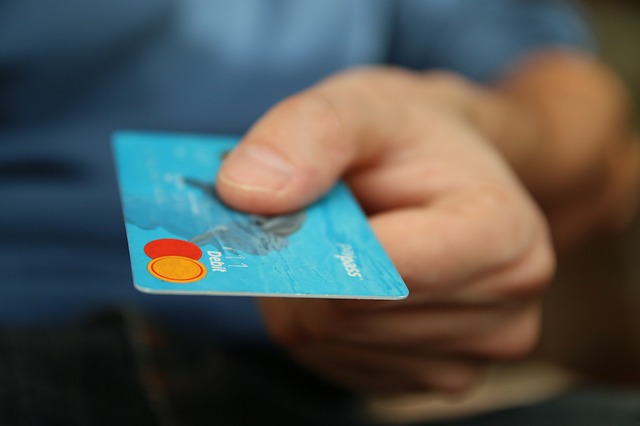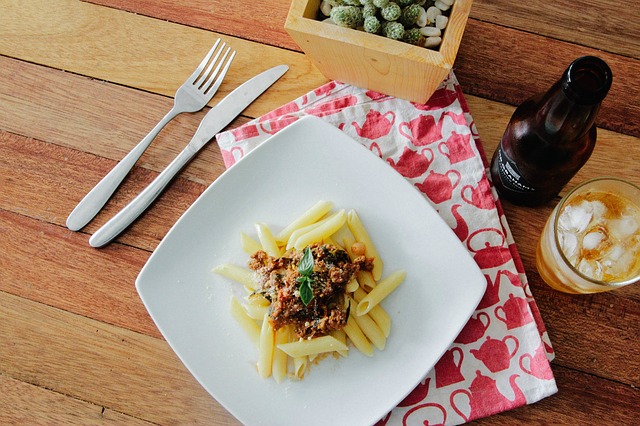I’m hardly an expert on business dining dos and don’ts, much less dining etiquette in general. Shoot, I still sometimes fist my fork unless I make a conscious effort not to. That’s too bad, because first impressions are what make us stand out and be memorable — both positively and negatively. And that definitely includes business meals.
So what do you need to know about business dining etiquette so you can make a great impression?
Since I don’t know, I asked Sharon Schweitzer, J.D., a cross-cultural consultant, international protocol expert, and the founder of Protocol & Etiquette Worldwide (a company for whom I could serve as the “before” photo).
I learned a lot about business meals, and you will, too:
1. If you made the invitation, you’re responsible.
First the basics: if you extended the invitation, you’re considered the host — and that means you’re in charge of taking care of the bill.
That includes casual invitations, like, “Hey, let’s get together for dinner.” When the check comes, say, “I’ll take care of this,” or, “I’ve got this,” or even better immediately reach for the check without drawing attention to the fact you are.
In short, never let the bill sit there. Don’t leave any doubt.
2. But what if you were invited… yet you still want to pick up the check?
That’s an admirable gesture, but it’s also fraught with peril. Saying, “I’ll get this,” is like saying, “I don’t want the gift you wish to give me.”
How would that feel?
A person who invites you for dinner or drinks, even for business reasons, is nonetheless doing so out of the goodness of her heart. So don’t risk offending your host. And don’t try, however inadvertently, to steal her thunder.
I’ve done that. A CEO of a fitness company traveled from New York to where I live to work out with me and have lunch. Both were his idea. But when we left the gym to go to lunch, I thought, “Wow, he traveled all this way… the least I can do is pay for the meal.”
I like to think we were comfortable enough with each other by that point that he took it as a gesture of appreciation, but still: he offered, and I should have let him.
Quick note: if company policies don’t allow you to accept meals from vendors, suppliers, or whomever, mention that when the invitation is made. Just say, “I would love to go out to lunch, but per my company’s guidelines we’ll need to split the check.”
Easy.
3. As the host, actively set the pace.
Say you’re the boss and you’re taking your team out to lunch. If you want lunch to flow fairly quickly so you can get back to the office within an hour, tell the restaurant host or hostess that you want to order quickly. Say, “We have a group for lunch and we have a time commitment to meet so we won’t be ordering appetizers or dessert, and we need to be out of here in about 45 minutes…”
That way your servers will know your expectations and will work to meet them… and you’ll avoid that awkward moment when Bob orders dessert, and no one else does.
4. If you’re a guest, watch your host for clues.
Want to be a great guest? Follow your host’s lead.
- Place your napkin in your lap after the host; the host does so first to signal the start of the meal.
- When excusing yourself between courses, place your napkin on the chair seat, soiled side down.
- At the end of the meal, place your loosely folded napkin on the left of your plate after the host does. Don’t refold it.
- Stay with the program. If the host doesn’t order dessert, don’t order dessert. If the host doesn’t order coffee after the meal, don’t order coffee.
Again: easy.
5. Send the right signals.
The way you place your menu and your silverware provides unspoken cues to servers and to the people with whom you’re dining.
- Close your menu to indicate you’re ready to order. An open menu gives the impression you haven’t made up your mind. (If you need to refer to it when you’re ordering, open it again.)
- Once a piece of silverware is used, including the handle, it should never touch the table again. Rest forks, knives and spoons on the side of your plate. Unused silverware stays on the table.
- If you’re pausing between bites, place your fork with tines up near the top of your plate.
- To signal the server that you’re finished, place your fork and knife across the center of the plate at the 5 o’clock position.
5. As a guest, be savvy about ordering.
I have a friend who, when I invite him to dinner, always orders the most expensive thing on the menu. He thinks being asked to dinner is the perfect time to treat himself.
And yeah, it’s tacky.
So how can you be gracious and sensitive to potential price ranges without having to ask (and making the host feel like she should say, even if she doesn’t really mean it, “Please order anything you like.”)?
Start by asking the person who invited you for suggestions on the menu. Ask them to make suggestions or for their favorite dish. Listen carefully, because they will provide a top and bottom price range based on the entrées they recommend. Then select one of the dishes they recommend, or an item similarly priced.
Be complimentary and say, “This place seems great,” or, “This restaurant looks lovely.” And then say, “What do you recommend?” The answer should give you some guidelines.
And if all else fails, follow the 30 to 40th percentile rule: don’t order the least expensive item on the menu, but also don’t go for the most expensive: try to fall in the 30th to 40th percentile in terms of price. That way you show you’re appreciative without taking advantage… and you don’t call attention to what you order, either on the low or the high range.
6. As a host, make it easy for your guests to be savvy.
If you’re the host, you can make the process easy for your guess. If you want your guests to order anything they like, say, “The lobster is great.” (But make sure you plan to order the lobster or something similar; if a guest orders the lobster and then you just get a salad…)
The goal is to point out a few items that will give your guests a sense of the price range. Most people will order something that falls within that range.
7. Send an unspoken message to the sommelier.
If you’re asking for wine advice, tell the sommelier what entrees you have ordered and then provide a sense of your price range by pointing out two or three wines you’re considering or have enjoyed in the past.
The sommelier will naturally stay within those ranges.
8. To drink or not to drink… that can be a tough question.
If the host orders alcohol and you don’t wish to drink, simply order the beverage of your preference without an explanation. “I’ll have an iced tea with lemon, please,” or, “I’ll have a Diet Coke, please,” and continue to browse the menu. You are under no obligation to consume alcohol at lunch or any other time of the day. Polite dining companions will neither comment nor ask questions.
If not drinking when others do makes you uncomfortable, finesse it. Say, “I really would love to join you for a glass of wine but I can’t today… so I’m going to live vicariously through you.”
That way you aren’t setting yourself apart, and you definitely don’t appear to be judging.
9. Wait for coffee to talk business.
At dinner, stay light during dinner and talk business over coffee. It’s hard to have a substantive business discussion — much less talk about terms, agreements, or pricing — while you’re eating.
Keep the conversation casual during the meal. Turn serious when the meal is finished.
10. Tip appropriately.
The host is also responsible for tipping the bartender, the sommelier, the valet, the coat check… everyone. Remember, you extended the invitation. You’re responsible.
Often a guest will offer to take care of the tip. Depending on the nature of your professional (and personal) relationship, that might be okay… but when in doubt, the host shells out.
11. Remember, food is a universal experience.
Food is our common ground. Meals bring us together.
Think of your business meals as, first and foremost, a way to come together and share a common experience.
Do that and while you may not close the deal, you’ll almost never go wrong where manners and etiquette are concerned.
To receive similar content, “Like” us on Facebook @ https://www.facebook.com/niagarabuzz.ca












